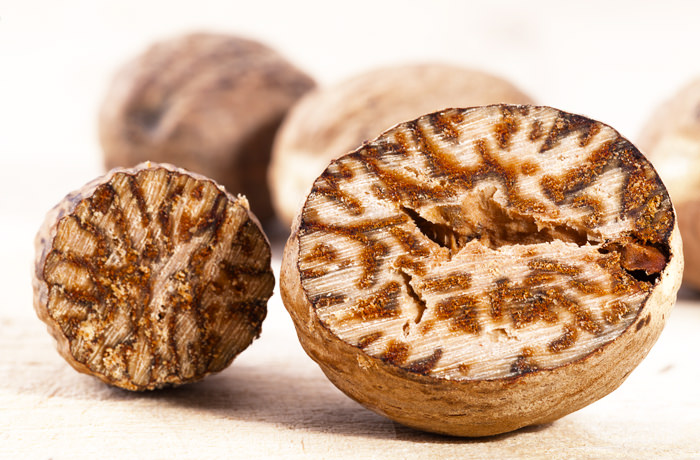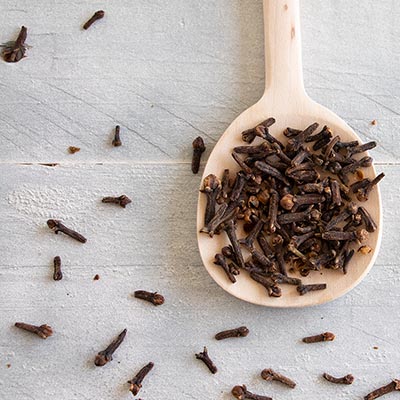The original home of the Muscat trees, which exist in several subspecies, can be narrowly limited to the southern Moluccas and some neighboring islands. In the Middle Ages, nutmeg was brought to Europe by Arab traders. There, like many other spices, it was initially reserved only for the rich of society. Nutmeg was particularly precious, extremely rare and was also considered India's gold. Spices made a fortune at the time. The Portuguese were the first Europeans to bring nutmeg from Indonesia to their homeland by sea.
Today nutmeg trees can also be found in Africa, South America and Asia. There are about 150 different species. The evergreen, richly branched nutmeg tree reaches a height of 10 to 16 meters and turns about 100 years old. Only after about 8 years does the tree bear fruit for the first time. Laurel-like, tapered leaves ensure dense, dark green foliage. The pale yellow flowers are grouped into 5 to 10 bunches and develop fleshy fruits similar to apricots that burst at maturity. Botanically, the fruit is not, as the common name says, a nut, but a lonely berry. Under its flesh, it carries a stony kernel, which is surrounded by a tattered, chimney red seed coat, the arillus.
The kernel contains the oil-containing seed, the so-called nutmeg. The seed coat is known in the trade as mace or macis.
Flavour of Nutmeg
The nutmeg has a very fine aromatic aroma and tastes characteristically fiery, spicy and slightly bitter.
Usableness of Nutmeg
Nutmeg is available in stores ground or as a nut. Freshly grated, the spice develops its aroma in a special way. Nutmeg is a universal spice and is ideal for seasoning potatoes and vegetables such as spinach, asparagus, cauliflower or cauliflower. Muscat also gives meat dishes, soups and sauces an intense flavor. Alternatively, try freshly ground nutmeg over fruit salad, ice cream, crepes or compote. Very delicious.
Not to forget, nutmeg is also often found in sausage spice mixtures as well.




















